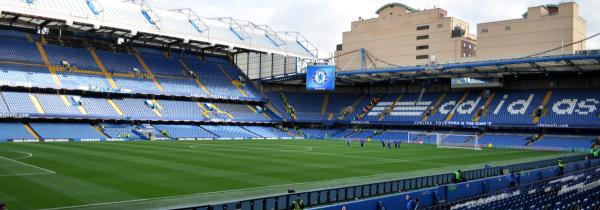
In a presentation to the Chelsea Pitch Owners (CPO) Chelsea FC has made the case that building a new 60,000-stadium at the Stamford Bridge site is not a financially feasible option. Nor is a redevelopment of the stadium to a capacity of 55,000 seats.
Chelsea has recently been anxiously looking for a solution to break out of the impasse with the CPO who acquired the freehold to the stadium in 1997 with the aim of protecting the Stamford Bridge site from developers. Without ownership of the freehold Chelsea would be unable to make a move to a new stadium at a different site, something the club has been actively pursuing in recent years.
Chelsea failed to convince the CPO late last year in an attempt to buy back the freehold, with the CPO preferring a more active exploration of the possibilities to redevelop Stamford Bridge. The club has now published a detailed analysis of such redevelopment on its website, and has given the CPO a more detailed presentation.

In its analysis the club focuses on two options: building a complete new stadium at the site, or expanding the current stadium.
The club concludes that both options are not feasible from a planning and financial perspective. The main problem for the construction of a new 60,000-stadium would be the lack of available land, as the stadium is enclosed by railway lines and housing. It would therefore require the acquisition and demolition of these buildings, some of which are listed. The stadium would also have an impact of adjacent conservation areas, and would reduce the light of surrounding homes.
A new stadium would hence be expected to have a total cost of £600 million. It would also mean that the club would have to play its home matches at another stadium for three years.
For a possible expansion would only qualify the Matthew Harding Stand and Shed End, hereby adding 13,000 extra seats. However, extending both stands would be incredibly expensive, an estimated investment of £20,000 per extra seat, which would result in a payback period of 25 years and a mere 2.8% rate of return measured over a 50-year period. The extended stands would also reduce the matchday experience for Chelsea fans as they would be seated further away from the action.
Both scenarios would also run into significant problems in terms of exit routes and transport capacity. The stadium has currently only three exit routes, all coming out on Fulham Road, but would need at least another exit route to Seagrave Road to channel people away from Fulham Broadway tube station (which is already at full capacity), on top of extra exit capacity for Fulham Road.
Overall, the effect on listed buildings and conservation areas, and the necessity to buy and demolish homes and office buildings could spell disaster in terms of acquiring planning permission.
CPO reacted in a statement that “a persuasive case was put that [a Stamford Bridge expansion] might no longer be feasible or viable.” They also remarked that “presentations were very open, with regular input, questions and points made by the CPO board. All were responded to with clarity and transparency by the club and the experts they had brought along.”
Chelsea FC made sure to note that no decision has been made yet, and that all options are still on the table. However, as it seems, the club seems to have edged a little bit closer to moving away from Stamford Bridge.
Photo Stamford Bridge: Flickr user Jason Bagley.
Photo old Stamford Bridge: via Chelsea Pitch Owners.